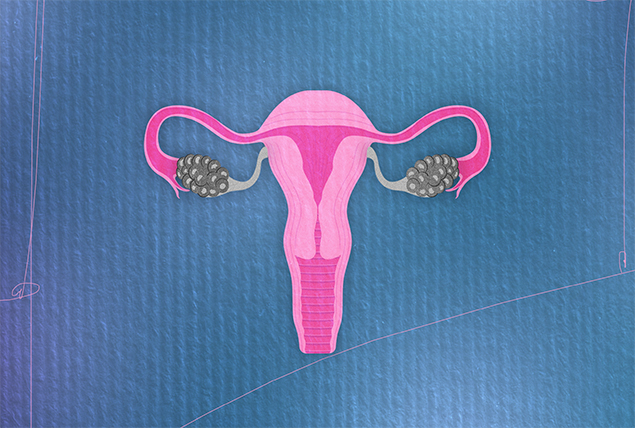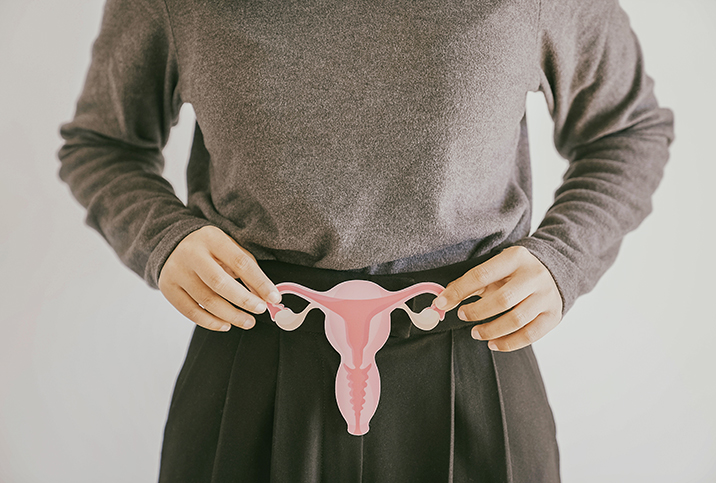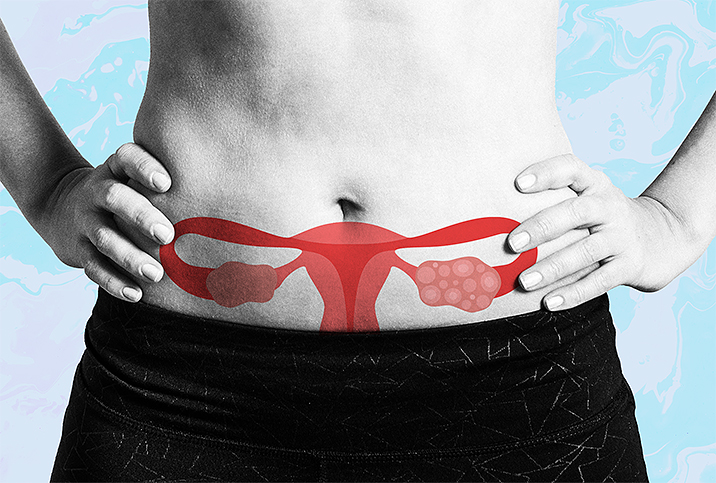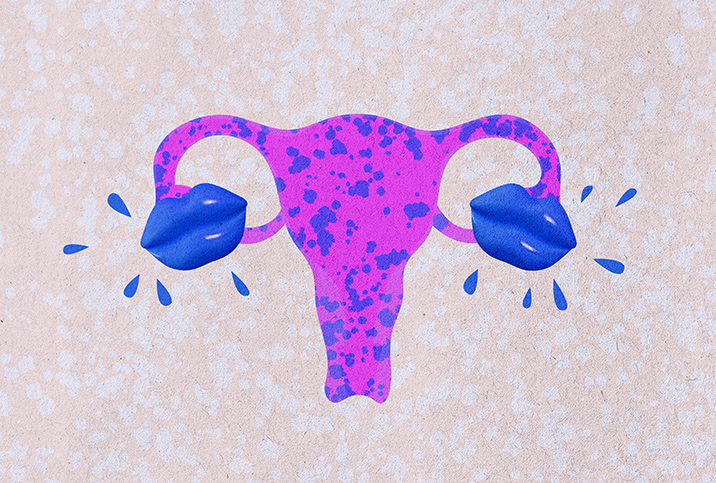What Kinds of Problems Can Develop With Your Ovaries?

The ovaries play a vital role in the female reproductive system by storing and releasing the eggs, as well as aiding in the production of the hormones estrogen and progesterone.
These two almond-shaped organs are located on either side of the uterus and each contain thousands of follicles, which are small sacs that hold immature eggs.
Healthy ovaries serve to ensure the process of ovulation occurs, followed by either conception or menstruation. However, like any organ, there are a number of problems that can transpire within the ovaries, ranging from benign, harmless cysts to ovarian torsion or cancer.
Cysts and tumors can cause problems with ovaries
Ovarian cysts are extremely common, usually harmless and go away without intervention, said Laura Purdy, M.D., a hospitalist and family medicine doctor at Williamson Medical Center in Franklin, Tennessee, and the chief medical officer of Wisp, a telehealth company that specializes in women's health.
Normal hormonal changes often result in the development of ovarian cysts in people in their reproductive years, as well as people who are pregnant. These are known as functional cysts, and are typically benign and heal naturally with time.
Non-functional cysts, also called ovarian cystic neoplasms, are less common and develop when cells grow or divide uncontrollably, causing an abnormal growth. Some of these cysts can be painful and require treatment, such as surgery. They can be benign (non-cancerous) or malignant (cancerous), and the chances of malignancy increase dramatically with age. Some cysts can turn into tumors over time.
Ovarian tumors, whether benign or malignant, can be divided into three categories: surface epithelial tumors, which are the most common type and and develop in the cells that line the ovary surface; stromal tumors, which form in the part of the ovary that produces reproductive hormones and are rarely malignant; and germ cell tumors, which are more common in young women and develop in the cells that become eggs.
Germ cell tumors are typically benign, but they can become malignant over time.
"Cancerous tumors are exceptionally rare in younger people," Purdy said. "Below the age of 40, 50, 60, in the younger decades of life, ovarian cancer is very, very rare."
Ovarian cancer can cause problems with your ovaries
Ovarian cancer is a type of cancer that either begins in the ovaries or the cells in the far end of the fallopian tubes. It starts when cells grow and multiply quickly, eventually destroying healthy tissue and potentially spreading to other parts of the body, if left untreated.
About 19,880 people received a new diagnosis of ovarian cancer last year in the United States, while about 12,810 died from the disease, according to estimates by the American Cancer Society (ACS).
For people assigned female at birth, ovarian cancer ranks fifth in cancer deaths, which is the highest of any cancer of the female reproductive system. According to the ACS, someone assigned female at birth has a 1 in 78 risk of developing ovarian cancer during their lifetime, while the risk of dying from it is about 1 in 108.
"Ovarian cancer is a really interesting pathology because it's largely asymptomatic, meaning there really are no symptoms," Purdy said. "You can have the development of ovarian cancer without having any pain or weight loss sometimes."
It can be very difficult to determine whether a cyst or tumor is benign or malignant. This means that, often, by the time the cancer gets to the point where someone is experiencing symptoms, such as pain or bowel obstructions or a feeling of fullness in their abdomen, the tumor is likely big.
For this reason, Purdy said, ovarian cancer tends to be fairly devastating. It is often only diagnosed when the cancer has progressed significantly.
Fortunately, the rate at which women are diagnosed with ovarian cancer has been slowly declining over the past 20 years, according to the ACS.
Ovarian failure can cause problems with ovaries
Premature ovarian failure, called primary ovarian insufficiency, refers to a condition in which the ovaries stop functioning as they should before someone reaches the age of 40.
There are two types of ovarian failure: primary ovarian failure, which is when the ovaries don’t function normally because of surgery or treatments for diseases, and secondary ovarian failure, which is when the ovaries are normal other than the fact that hormone signals from the brain can’t properly reach them.
While ovarian failure can lead to infertility, some people with ovarian failure might still get occasional periods and even become pregnant. Some of the symptoms of ovarian failure include irregular or missed periods, hot flashes and night sweats, vaginal dryness, decreased libido and trouble getting pregnant.
Ovarian torsion: A rare problem with ovaries
Ovarian torsion is an extremely rare situation in which the ovary, and sometimes the fallopian tube, twists on itself, cutting off blood supply. It is comparable to testicular torsion in people with testicles, Purdy said.
"It's analogous to a heart attack, but for the ovary," Purdy said.
While it’s not typically life-threatening, it is imminently threatening to the survival of the ovary. Purdy said the affected ovary can die within a matter of hours if the blood supply isn’t restored. It’s a medical emergency that requires prompt diagnosis and surgery.
People with ovarian torsion may experience symptoms such as nausea, severe pelvic pain, vomiting, fever and abnormal bleeding.
If too much time passes before the issue is treated, the surgeon may have to remove the ovary entirely.
It's important to see a healthcare professional as soon as you notice symptoms related to any of these ovarian conditions, as failure to do so could have dire consequences.


















